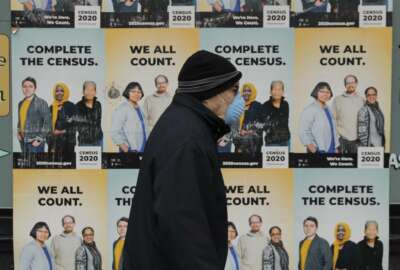Biden administration takes new approach to gather data on federal workforce quickly
The Federal Pulse Survey gives the administration a more real-time data snapshot of how federal employees feel about their workplaces, compared to more established...
The Biden administration is taking a new approach to ask federal employees how they feel about burnout, returning to the office and whether agency leadership makes diversity and inclusion a priority.
The President’s Management Council, together with the Office of Management and Budget, the Office of Personnel Management and the General Services Administration, released the first data from its Federal Pulse Survey.
The first-round pulse survey, a pilot project which launched in October, went out to the approximately 2 million civilian federal employees who work in the 24 largest agencies.
The pulse survey, an experimental way of gathering data that’s gaining momentum in the federal government, gives the administration a more real-time data snapshot of how federal employees feel about their workplaces, compared to more established methods such as the Federal Employee Viewpoint Survey.
The 10-question survey asked employees questions themed around three broad topics — employee engagement and burnout, the pandemic and plans to return to the office, and equity and inclusion.
Pam Coleman, the associate director of performance and personnel management at the Office of Management, said in a blog post last week that response rates varied across agencies, and that the preliminary data “offers only a partial view into the federal employee experience.”
“These surveys are meant to provide quick snapshots in time that reflect views of employees who choose to respond — not a comprehensive assessment of the entire federal workforce,” Coleman wrote.
Federal employees, on average, said they “somewhat agree” that they trust their supervisors to help them navigate conversations about the transition to office re-entry — the most positive response in the survey overall.
Most responses from the federal workforce, as a whole, generally fell between “neutral” and “somewhat agree” for most of the survey’s prompts.
Going deeper into the responses, however, agencies and their components showed the most variation on responses about whether leadership was doing a good job protecting employees’ health, safety and wellbeing.
The National Science Foundation employees gave their leadership the highest score on office re-entry plans, as well as plans to protect their health, safety and wellbeing.
The Defense Department received the lowest agency scores from employees on returning to the office, as well as plans to protect the workforce’s health and wellbeing.
Employees at DoD, the Education Department, the Department of Housing and Urban Development and SSA said they were the most likely to take a different job with more remote work options or workplace flexibilities.
Aside from feedback on return-to-office plans, federal employees on average gave the highest ratings to having someone at work they could talk to about their day-to-day problems, and agency leadership showing they value diversity and inclusion goals in the workplace.
Employees at SSA, followed by the Veterans Affairs Department and USAID, were more likely than employees at other agencies to feel exhausted in the morning at the thought of another day of work.
Employees at DHS and SSA said they were most likely to take another job that offered the same pay and benefits as their current position.
Employees at NASA, consistently ranked as one of the best places to work in the federal government, said most consistently they would not work elsewhere for the same pay and benefits.
Respondents who work at SSA, followed by USAID, gave the lowest marks to the reasonableness of their workloads.
The pulse survey saw the highest response rates from employees at USAID, the Environmental Protection Agency and GSA.
The survey data shows employees at the Interior Department, Social Security Administration and the State Department showed the lowest response rate.
The pilot marks the first pulse survey to go out to the entire civilian federal workforce, but more agencies have adopted pulse surveys to support their missions in recent years, especially during the pandemic.
The Census Bureau in April 2020 launched pulse surveys to track how households and small businesses were affected by the health and economic impact of the pandemic.
The bureau continues to collect data for both pulse surveys as a way to provide near-real-time data.
The Census Bureau, in launching these experimental data products, expected response rate much lower than traditional surveys — about 5% overall — but it’s able to gather responses quickly and cheaply by inviting individuals to participate via email or text message.
The VA released a pulse survey in October 2018 that found a significant increase in workforce engagement and morale compared to previous years.
VA developed the pulse survey after agency officials warned they weren’t getting a clear picture of the organization’s need with OPM’s annual Federal Employee Viewpoint Survey.
VA’s 87-question pulse survey included 30 FEVS questions, but it received a much higher employee response rate, compared to the FEVS response rate the agency had seen in prior years.
Most recently, Education Department last year launched its School Pulse Panel, a monthly survey that collects data on the pandemic’s impact on students and staff in K-12 schools.
The agency stood up the monthly pulse survey as part of the Biden administration’s January 2021 executive order on reopening schools and early childhood education providers.
The Census Bureau conducts the survey of behalf of Education’s National Center for Education Statistics.
Copyright © 2025 Federal News Network. All rights reserved. This website is not intended for users located within the European Economic Area.
Jory Heckman is a reporter at Federal News Network covering U.S. Postal Service, IRS, big data and technology issues.
Follow @jheckmanWFED





